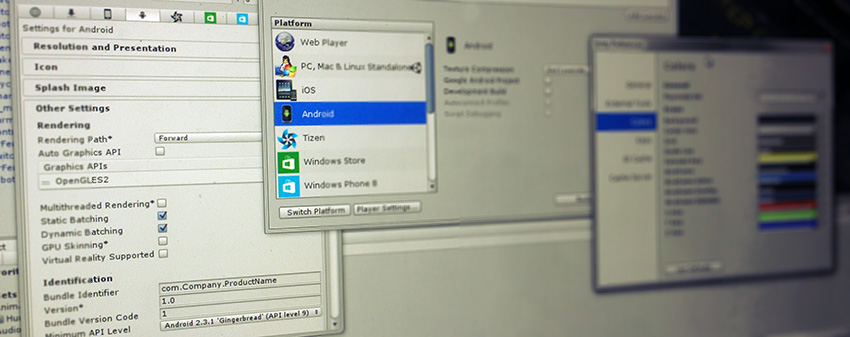Editor Features

This section details some of the Unity Editor’s features such as choosing preferences, integrating with version control system, preparing your project for a build, and more.
| Topic | Description |
|---|---|
| 2D and 3D mode settings | Understand 2D and 3D mode settings in the Editor. |
| Preferences | Customize the behavior of the Editor. |
| Shortcuts Manager | View and manage keyboard shortcuts in the Editor. |
| Build profiles | Use build profiles to build your application for different platforms with unique build configurations. |
| Incremental build pipeline | Learn how to use the incremental build pipeline. For faster iteration during development, Unity uses an incremental build pipeline that only rebuilds parts of the application if they have changed since the previous build. |
| Project SettingsA broad collection of settings which allow you to configure how Physics, Audio, Networking, Graphics, Input and many other areas of your project behave. More info See in Glossary |
Define settings for your project. |
| Visual Studio C# integration | Integrate the Editor with Visual Studio. |
| RenderDoc Integration | Learn how the Editor supports integrated launching and capture of the RenderDoc graphics debugger, for detailed frame introspection and debugging. |
| Editor analytics | Learn how the Unity Editor collects data about how the product gets used. |
| Check For Updates | Checks if updates are available for the Editor. |
| IME in Unity | Understand Input Method Editor (IME) support in the Editor. |
| Version ControlA system for managing file changes. You can use Unity in conjunction with most common version control tools, including Perforce, Git, Mercurial and PlasticSCM. More info See in Glossary |
Use Unity in conjunction with common version control tools. |
| Safe Mode | Enter Safe Mode in the Editor. Safe Mode is a mode that the Editor can enter when you open a project that has script compilation errors. |
| Command-line arguments | Run the Unity Editor and standalone Player applications from the command line. |
| Text-Based Scene Files | Learn about text-based formats for sceneA Scene contains the environments and menus of your game. Think of each unique Scene file as a unique level. In each Scene, you place your environments, obstacles, and decorations, essentially designing and building your game in pieces. More info See in Glossary data. |
| Troubleshoot the Editor | Troubleshoot and prevent problems in the Editor. |